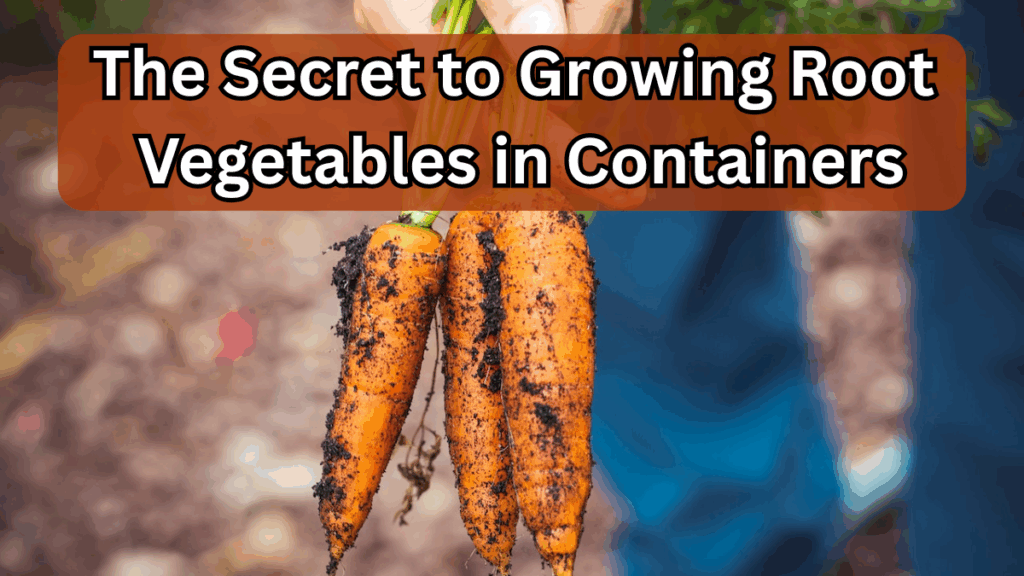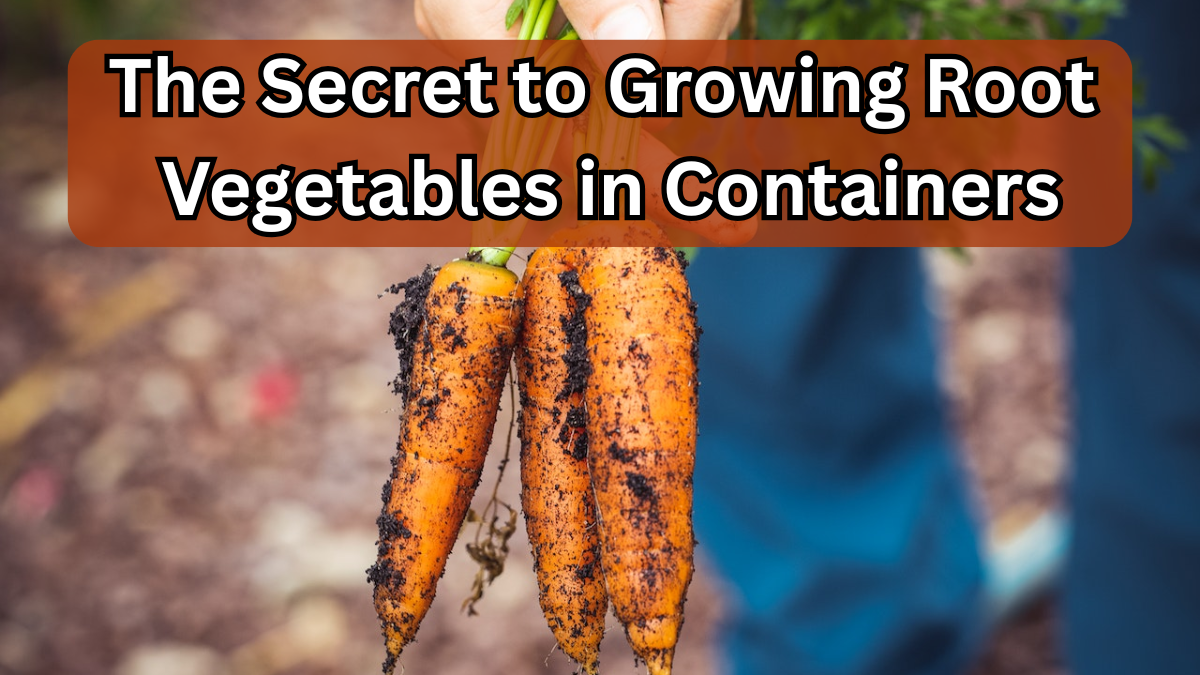Root vegetables like carrots, radishes, and beets are surprisingly easy to grow in your own backyard—even if space is limited. With the right approach, you can enjoy fresh, homegrown produce straight from containers. Here’s everything you need to know about growing root vegetables in containers successfully.

Why Grow Root Vegetables in Containers?
Growing root vegetables in pots has several advantages:
-
Space-saving: Perfect for small patios, balconies, or urban gardens.
-
Control over soil quality: Use rich, well-draining container soil to ensure healthy roots.
-
Easy maintenance: Watering, harvesting, and pest control become much simpler.
-
Year-round gardening: Move containers indoors during extreme weather.
Choosing the Right Containers
When it comes to growing carrots in pots or other root crops, container selection is crucial:
-
Depth matters: Root vegetables need space to grow downward. Opt for deep containers at least 12–18 inches.
-
Size: Wide pots allow multiple plants to grow without crowding.
-
Drainage: Ensure your container has holes to prevent waterlogging, which can rot roots.
| Vegetable | Ideal Container Depth | Recommended Container Type |
|---|---|---|
| Carrots | 12–18 inches | Tall pots, fabric containers |
| Beets | 12–15 inches | Ceramic or plastic pots |
| Radishes | 10–12 inches | Small pots or planter boxes |
| Turnips | 12–16 inches | Wooden or plastic containers |
Selecting the Best Container Soil
The soil you choose can make or break your success in growing root vegetables in containers:
-
Use light, loose, and well-draining container soil.
-
Avoid heavy garden soil that can compact, restricting root growth.
-
Mix in compost or organic matter to provide nutrients for healthy roots.
-
For carrots and similar crops, consider adding sand to improve drainage.
Planting and Care Tips
To maximize your harvest, follow these essential tips for growing carrots in pots and other root vegetables:
-
Sow seeds properly: Plant seeds at the recommended depth on the seed packet.
-
Spacing: Thin seedlings to avoid crowding, giving roots enough room to expand.
-
Water consistently: Keep the soil moist but not soggy.
-
Sunlight: Place containers in a location with at least 6 hours of sunlight daily.
-
Fertilize lightly: Too much nitrogen encourages leafy growth at the expense of roots.
Harvesting Your Root Vegetables
Timing and technique are key:
-
Check the seed packet for days to maturity.
-
Gently loosen soil around the base before pulling roots out to prevent breakage.
-
Harvest continuously for crops like radishes, or wait until mature for carrots and beets.
Common Mistakes to Avoid
-
Using shallow pots that stunt root growth.
-
Overcrowding seeds in containers.
-
Ignoring soil drainage or overwatering.
-
Using nutrient-poor soil instead of enriched container soil.
FAQs
1. Can all root vegetables be grown in containers?
Most root vegetables like carrots, radishes, beets, and turnips can thrive in deep containers with proper soil and care. Some larger roots, like sweet potatoes, may need more space.
2. How often should I water container-grown root vegetables?
Keep the soil consistently moist, usually 2–3 times per week depending on weather. Avoid waterlogging, as it can cause root rot.
3. What is the best soil mix for root vegetables in pots?
Use a loose, well-draining container soil mixed with compost and a bit of sand to promote proper root growth.
4. Can I reuse soil in containers for growing root vegetables?
Yes, but make sure to refresh it with compost and nutrients to maintain fertility for the next planting season.
Click here to learn more
